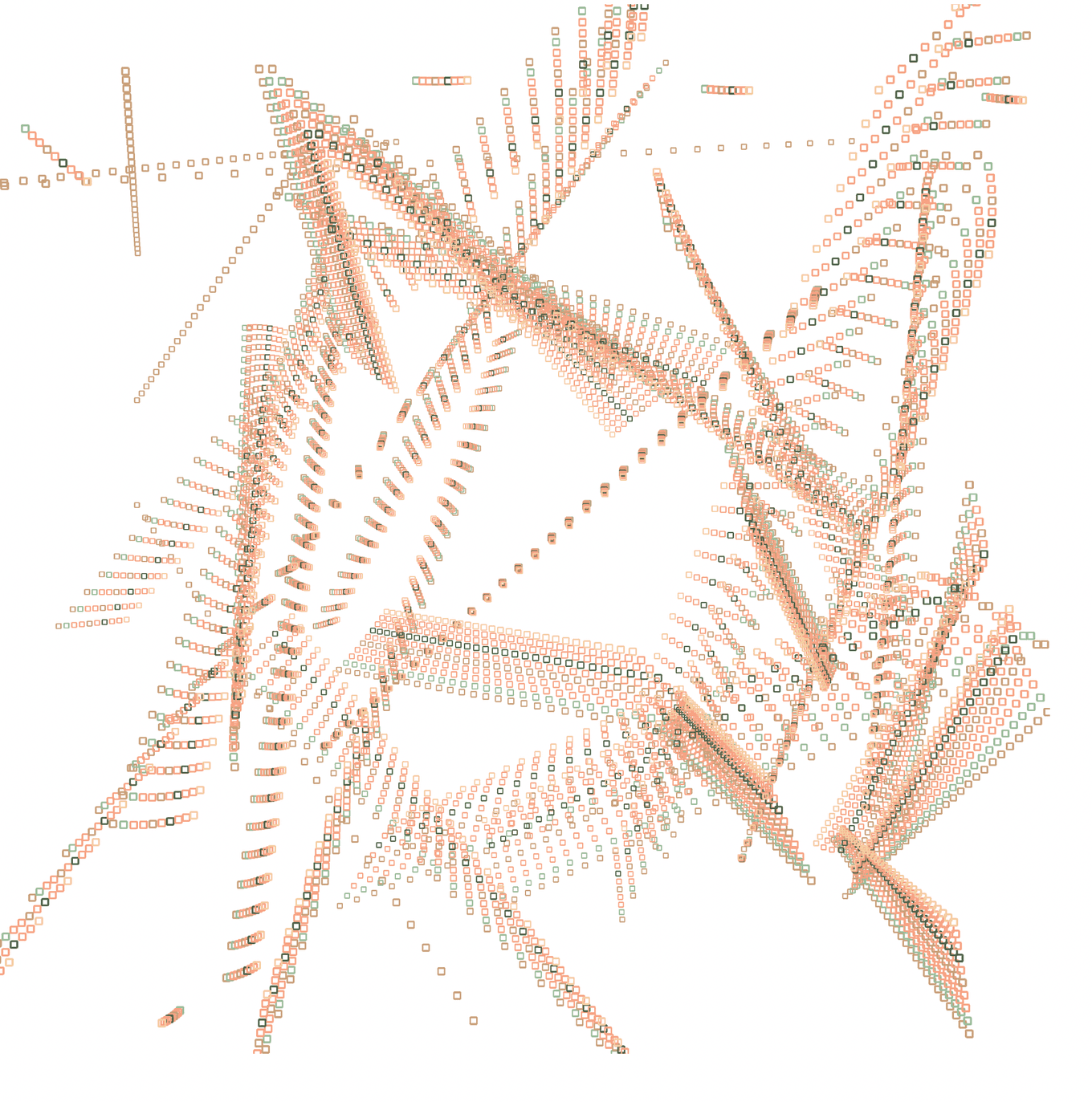Force Directed
Force directed network visualization algorithms.
January 11, 2022
Inspiration
Social network analysis was my field. And it’s a unique field that only exploded in the past decade because of the rise of social networks.
Networks, Crowds, and Markets: Reasoning About a Highly Connected World
I was also inspired by Sol Lewitt’s $100 drawings.
Not to Be Sold for More Than $100 explores the little-known but fascinating body of conceptualist pioneer Sol LeWitt’s folded, torn, and cut paper works, which he created from approximately 1971 to 1980. LeWitt referred to these works as the “R” drawings (for rip) and also as “hundred dollar drawings,” since he wanted them to be sold for $100 in perpetuity. “His wall drawings were already selling for thousands of dollars, so he wanted to have some artwork that everybody could buy,” notes Jason Rulnick. Thanks to extensive research throughout various private and public collections around the world, this volume includes over 100 color plates. In the high-flying commerciality of the contemporary art world, LeWitt’s intention and foresight for this body of work resonates more than ever.
That’s funny. So I kind of wanted to create a light weight collection of small volume visualizations that cannot be sold by more than 1 tez.
Technical Notes
This is a fun technical project. I always used the built-in libraries from various softwares to do network visualization and never implemented my own.
For this project, I loaded the Stanford Open Graph Benchmark and implemented the Spring Embedder by Eades Force Directed graph algorithm from scratch.
The non-adjacent nodes have forces repelling each other. Edges are behaving like a spring drawing adjacent nodes closer together. By tuning the parameters, an equilibrium of force is reached.



